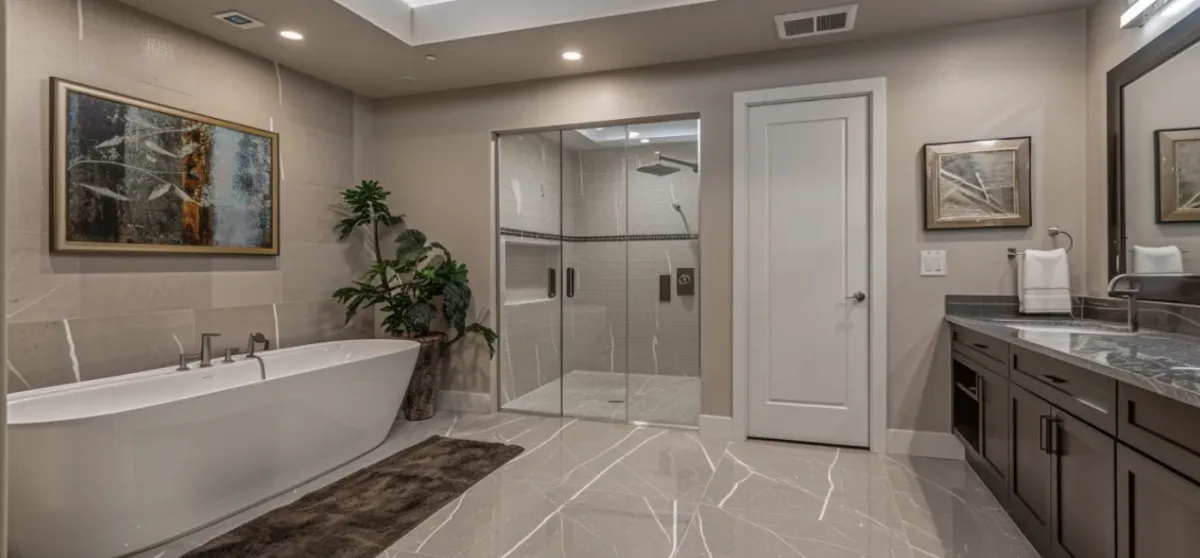
The Importance of Ventilation: Bathroom Soffit Vents
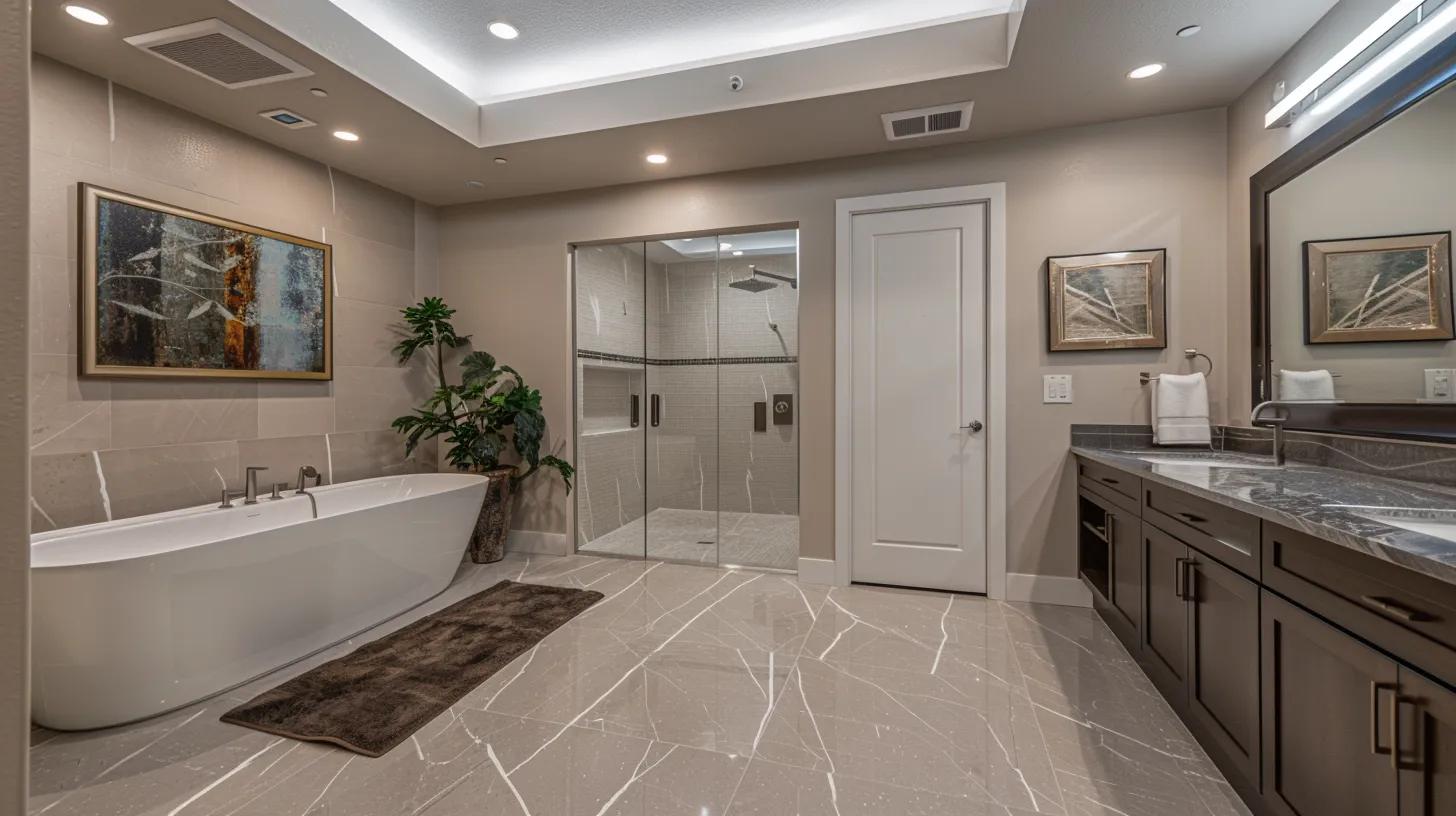
Bathroom Soffit Vent: Installation, Benefits, and Airflow Optimization
In many older and modern homes alike, ensuring proper ventilation is essential to maintain a healthy building envelope and prevent issues such as moisture buildup, water damage, and mold growth. In bathrooms, excess humidity can lead to condensation on the ceiling and walls, causing deterioration of building materials, higher energy costs, and even structural damage over time. One efficient solution to manage this is the installation of a bathroom soffit vent. This article thoroughly explains what bathroom soffit vents are, how they function, and why they are a critical component of a comprehensive attic and overall home ventilation system. The discussion will cover the differences between soffit vents and other vent types, guide homeowners in selecting the right type, and provide a detailed step-by-step installation process. In addition, the article explores how to optimize the airflow from these vents to maximize performance and prevent problems such as mildew or heat buildup. This detailed coverage is especially beneficial for homeowners in the South Shore MA area seeking to protect their investments with advanced construction techniques provided by experts like ahb construction llc. With clear explanations, scientific research references, practical lists, and tables that compare performance metrics, this article serves as a comprehensive resource for understanding and implementing bathroom soffit vents effectively.
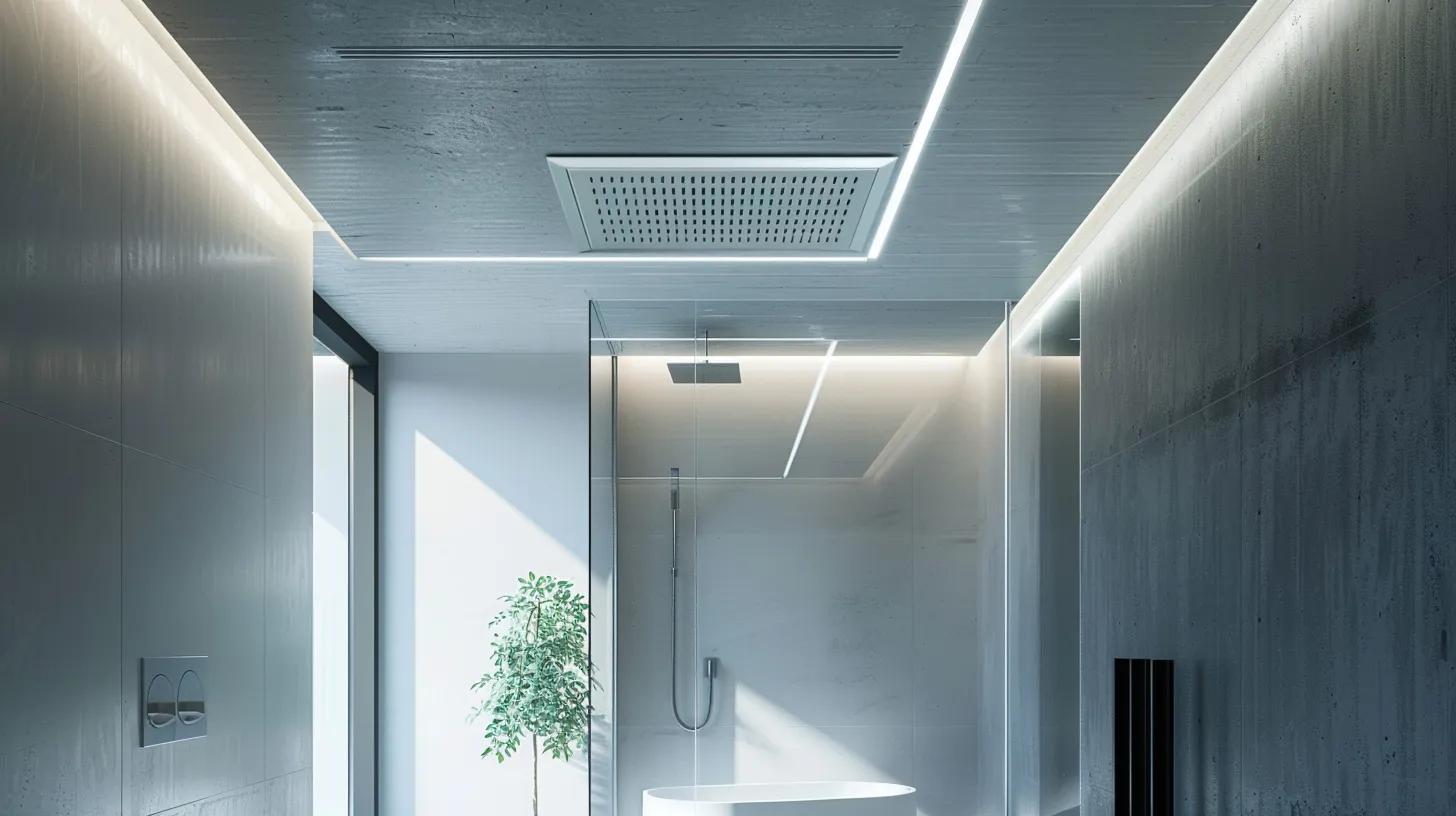
Transitioning from the general overview, we now examine in depth how a bathroom soffit vent operates to manage and expel excess moist air and contaminants from the bathroom, contributing to a healthier indoor environment.
Understanding Bathroom Soffit Vent Functionality
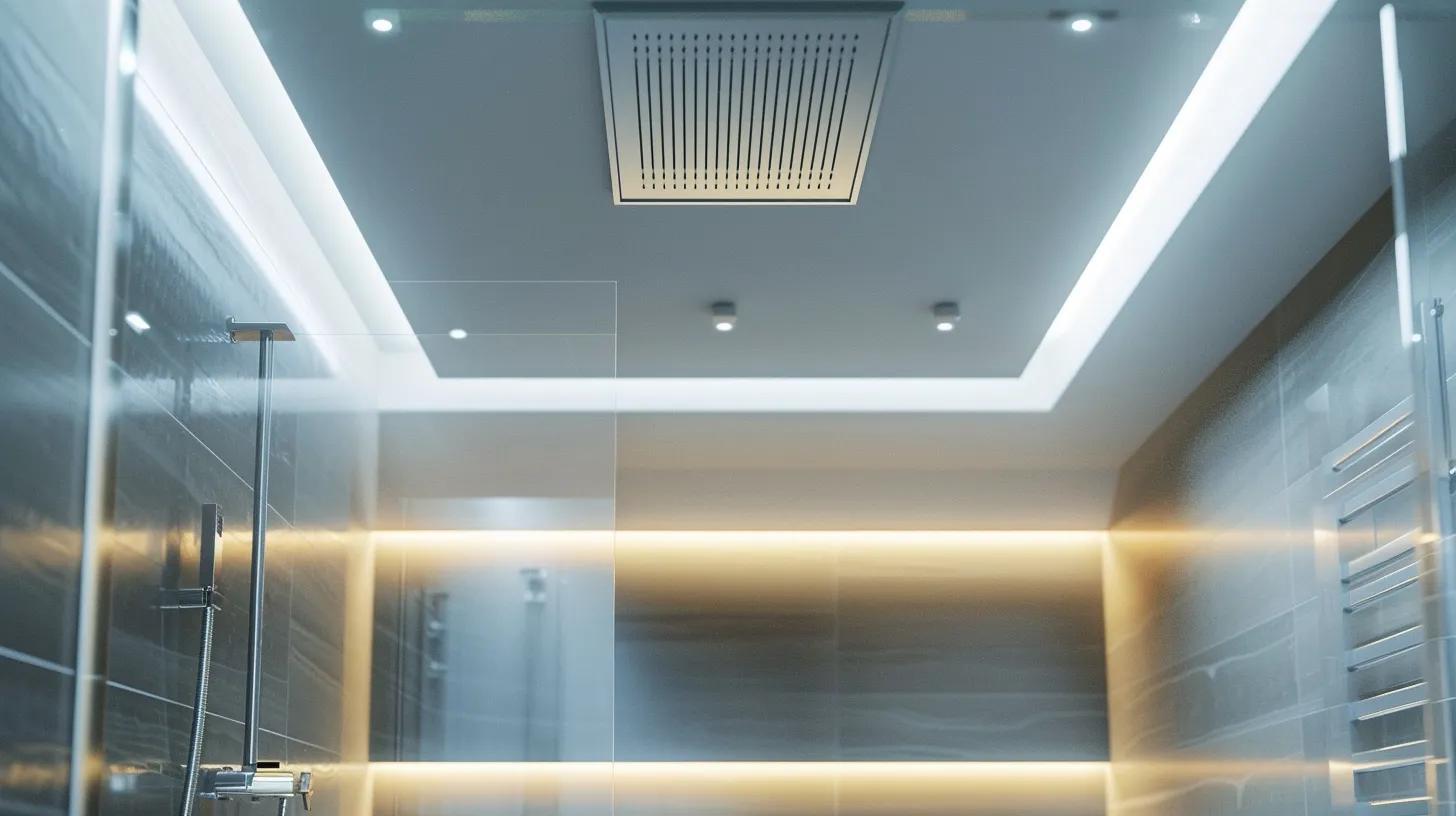
Bathroom soffit vents play a vital role in maintaining indoor air quality and preventing long-term damage to building structures. They are designed to allow moist air created from showers and baths to be exhausted from the bathroom, thereby reducing humidity levels. In essence, these vents facilitate a continuous airflow from the bathroom into the attic space and sometimes directly outside, thereby mitigating issues such as condensation, water damage, and mold. The core principle of these vents is similar to that of a traditional exhaust fan; however, bathroom soffit vents focus on exhausting air through the soffit of the building rather than the roof. This design choice can help avoid additional roof penetrations, minimizing the potential for further water leakage and structural damage.

How a Bathroom Soffit Vent Works to Remove Moisture
In a typical setup, the bathroom exhaust system pulls humid air from the room using an exhaust fan. The moist air is then directed either through ductwork to a soffit vent installed in the soffit area under the eaves or sometimes directly vented via the soffit structure. As air is drawn into the vent, it carries away excess moisture which could harm building material if allowed to accumulate. The soffit vent works passively by allowing fresh, drier air to replace the exhausted air, creating a continuous cycle of air exchange that aids in drying wet surfaces and maintaining stable humidity levels. By efficiently removing moisture, these vents reduce the chances of water damage, maintain indoor air quality, and protect the building envelope from mold, mildew, and rot.
Key Differences Between Soffit Vents and Other Vent Types
Unlike roof-mounted vents, which penetrate the roof and may contribute to potential leak pathways, soffit vents are installed along the underside of the roof eaves. This means that while both serve a ventilation purpose, soffit vents are part of the building’s intake system in many cases, allowing cooler air to enter the attic and promote circulation. In contrast, traditional exhaust fans and gable vents are mounted directly on walls or roofs and work by either actively exhausting the moist air or creating pressure differentials. The positioning of soffit vents along the building's edge typically results in a shorter duct run, which may reduce the likelihood of air blockage compared to longer, more convoluted runs associated with other vent types.
The Role of Soffit Vents in Attic Ventilation Systems
Soffit vents not only serve bathrooms but are also critical in the overall ventilation of attics. They establish an essential intake point for cooler air to enter the attic, allowing warm air to exit through roof or gable vents. This ventilation system helps maintain a balanced temperature inside the attic space, preventing heat buildup during summer months and reducing the possibility of ice dam formation during winter. Proper attic ventilation contributes to energy savings and extends the lifespan of the roofing materials by reducing thermal stress. When integrated with a bathroom exhaust system, soffit vents ensure that moist, conditioned air is expelled efficiently without interfering with the attic’s ventilation balance.
Why Proper Bathroom Ventilation Is Necessary for Home Health
Proper bathroom ventilation is paramount for preventing moisture-related problems that jeopardize home health. Bathrooms, by nature, generate high levels of humidity during daily activities. Over time, if this moisture accumulates, it can weaken structural elements, degrade insulation, and lead to conditions conducive to mold growth. This not only affects the durability of the home but can also pose significant health risks. Effective ventilation, therefore, is necessary not just for maintaining ideal indoor air quality but also for protecting the home's structural integrity against water damage and mold infestation. Homeowners who invest in proper ventilation systems, such as soffit vents, ultimately safeguard both their property and their family's health through better moisture management.
Key Takeaways: - A bathroom soffit vent removes humid air through ductwork, preventing mold and water damage. - Compared to other vent types, soffit vents lessen roof penetration risks by utilizing the eave area. - Soffit vents support overall attic ventilation, enhancing energy efficiency and roof longevity. - Proper bathroom ventilation is crucial for preventing structural damage and maintaining indoor health.
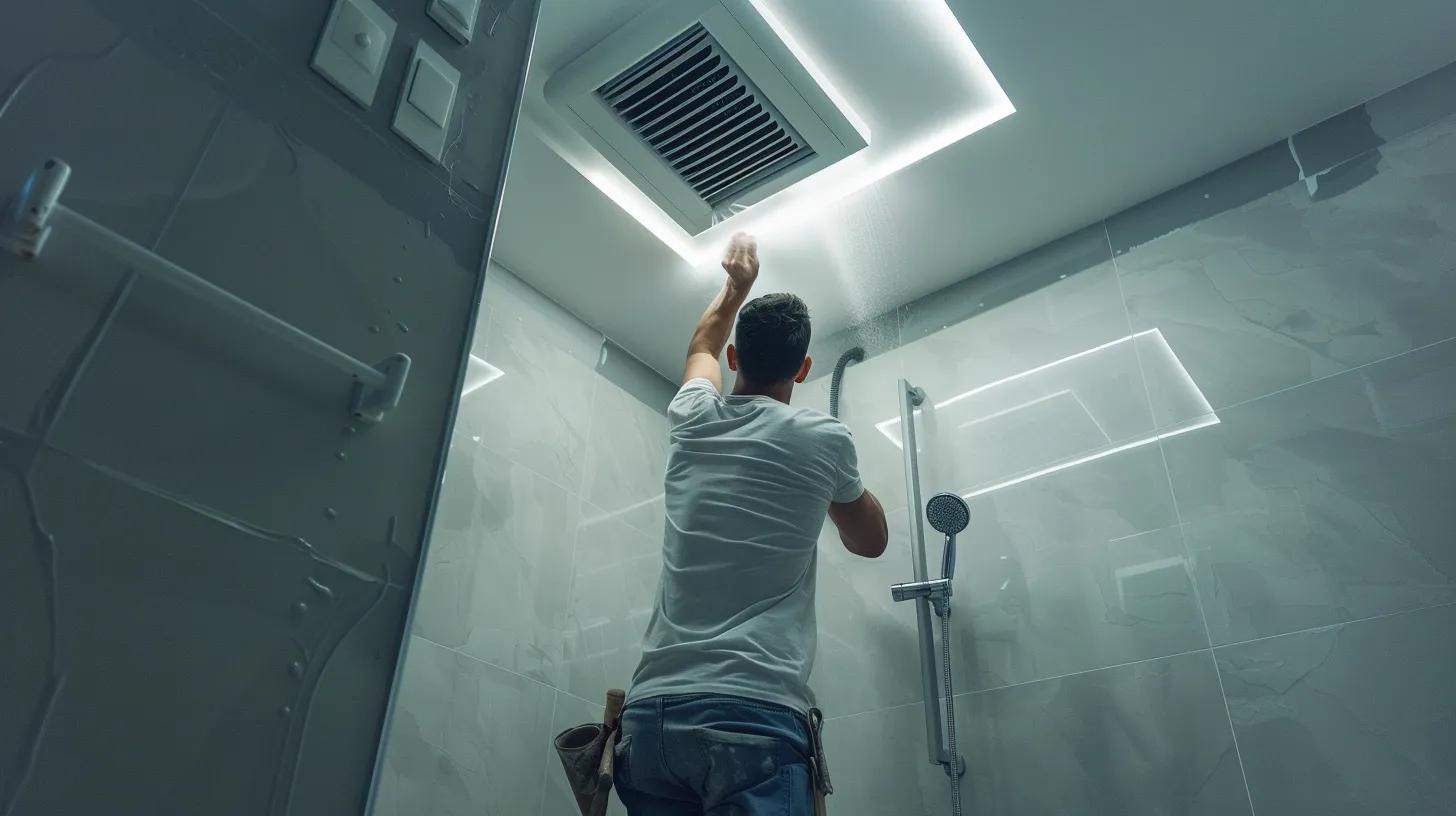
Selecting the Right Bathroom Soffit Vent

Choosing an appropriate bathroom soffit vent involves evaluating several factors, including the vent types available, the materials used in construction, sizing considerations, and airflow efficiency determined through CFM ratings. Homeowners must assess their bathroom’s specific needs in terms of moisture output and the potential for heat buildup. The building envelope complexity, including the design of the soffit, roof, and adjacent wall structures, further necessitates a carefully selected vent that is compatible with existing systems. With an increasing focus on energy efficiency and indoor air quality, selecting a soffit vent that not only meets ventilation needs but also provides durability and resistance to water damage is critical.
Types of Bathroom Soffit Vents Available
There are several types of bathroom soffit vents on the market. Some are passive, relying solely on the natural airflow generated by pressure differentials, while others are designed to work in tandem with an exhaust fan system. Passive vents typically feature louvered designs that permit air entry and exit without mechanical assistance. In contrast, powered soffit vents integrate with electrical systems to enhance airflow when additional moisture removal is required. In some cases, hybrid models offer both passive and active airflow management, ensuring consistent performance across different weather conditions and usage scenarios. Homeowners need to consider the overall design of their home, desired maintenance frequency, and integration with existing ventilation systems when choosing a vent type.
Materials Used in Bathroom Soffit Vent Construction
The longevity and performance of a bathroom soffit vent are highly dependent on the construction materials. Common materials include plastic, aluminum, and sometimes composite metals. Plastic vents, while generally more affordable, may not provide the same level of durability as aluminum vents, especially in climates with high UV exposure or significant temperature fluctuations. Aluminum vents, on the other hand, offer superior resistance to corrosion and can withstand environmental factors that challenge plastic versions. In addition, some vents incorporate fiberglass reinforcements to reduce flexing and ensure a more stable venting solution. The choice of material also affects the acoustic performance, where sturdier materials tend to minimize noise from wind and airflow disruptions.
Sizing a Bathroom Soffit Vent for Your Space
Soffit vent sizing is crucial to achieving effective ventilation. The size should be proportionate to the bathroom’s volume and the expected moisture output. Homeowners and contractors must calculate the required vent area in relation to the total square footage of the space and the input CFM (cubic feet per minute) of the exhaust fan system. Generally, larger bathrooms generating more steam – such as those with high-end fixtures, multiple showers, or jetted baths – may require a larger or additional venting solution. Precise measurements and professional consultations are recommended to ensure compliance with building codes and to optimize the balance between moisture removal and energy efficiency.
Considering CFM Ratings for Effective Air Exchange
CFM (cubic feet per minute) ratings describe the airflow capacity of the vent. A vent with a higher CFM rating can move a larger volume of air more rapidly, which is beneficial in high-moisture scenarios. For example, in a bathroom that produces a significant amount of humid air, a vent with a CFM rating that matches or exceeds the exhaust fan's output ensures that moisture is promptly evacuated. Homeowners should seek product specifications that provide detailed CFM ratings and compare them with the performance ratings of their exhaust systems. Balancing these ratings is crucial because an undersized vent can lead to bottlenecks in airflow, reducing the overall efficiency of the ventilation system and potentially causing issues like recirculation of moist air.
Features to Look for in a High-Quality Soffit Vent
When selecting a bathroom soffit vent, it is important to consider additional features that enhance the vent’s functionality and durability. Look for models that provide weather-resistant coatings, integrated flashing systems for secure installation, and noise reduction technologies. Adjustable louvers are particularly useful as they allow customization of airflow direction and control. Furthermore, some high-end vents come with filter systems to prevent the ingress of insects and debris, which can compromise system efficiency. Homeowners should also verify compliance with local building codes and environmental standards to ensure that the selected vent contributes positively to both energy efficiency and indoor air quality without sacrificing aesthetic appeal.
Key Takeaways: - Different vent types include passive, active, and hybrid models, each with unique benefits. - Materials such as aluminum and composite metals offer greater durability than plastic. - Proper vent sizing, based on bathroom volume and moisture levels, is essential. - CFM ratings help ensure that the vent can handle the moisture load effectively. - Additional features like adjustable louvers, noise reduction, and insect filters enhance vent performance.
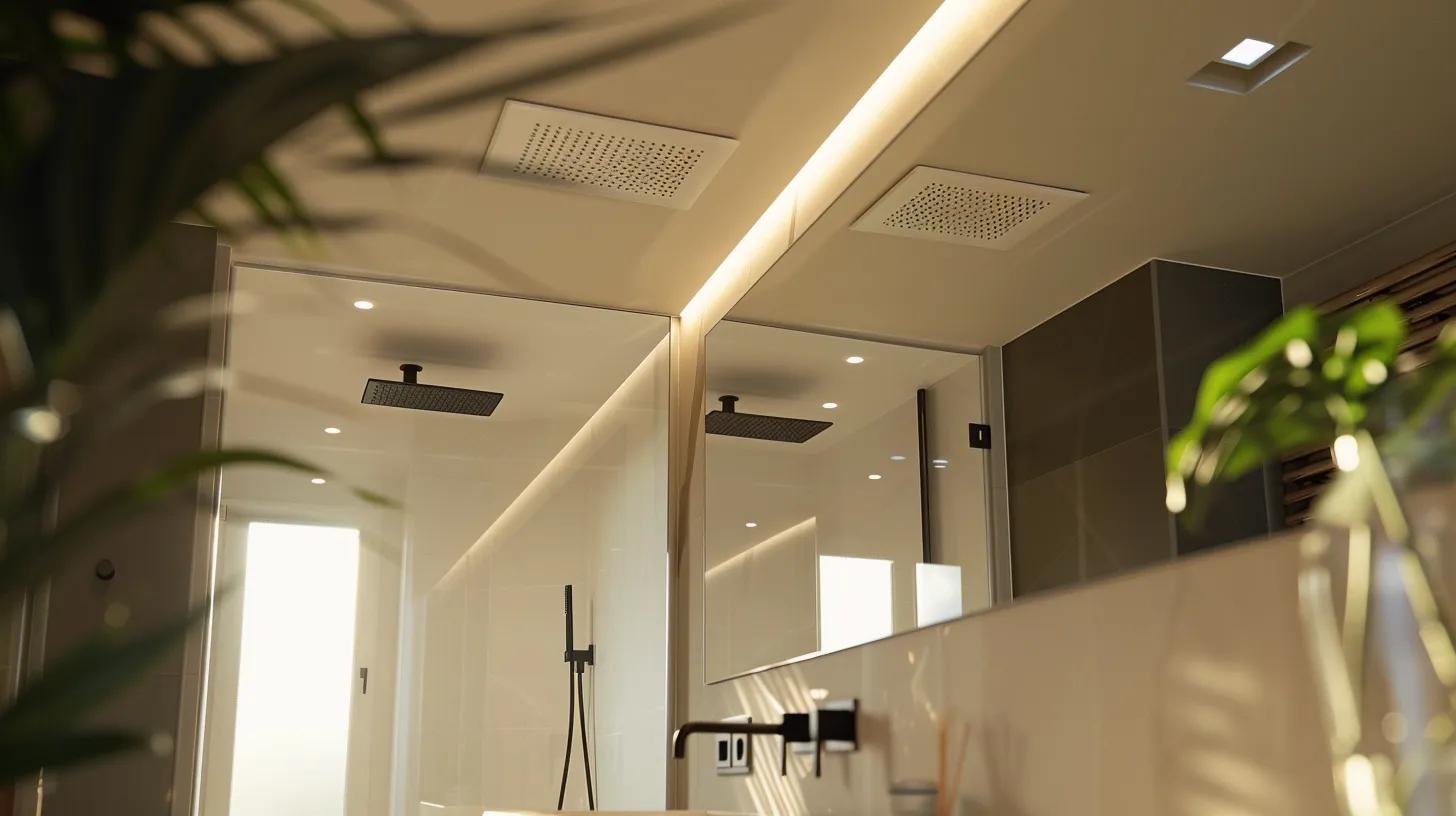
Step-by-Step Bathroom Soffit Vent Installation
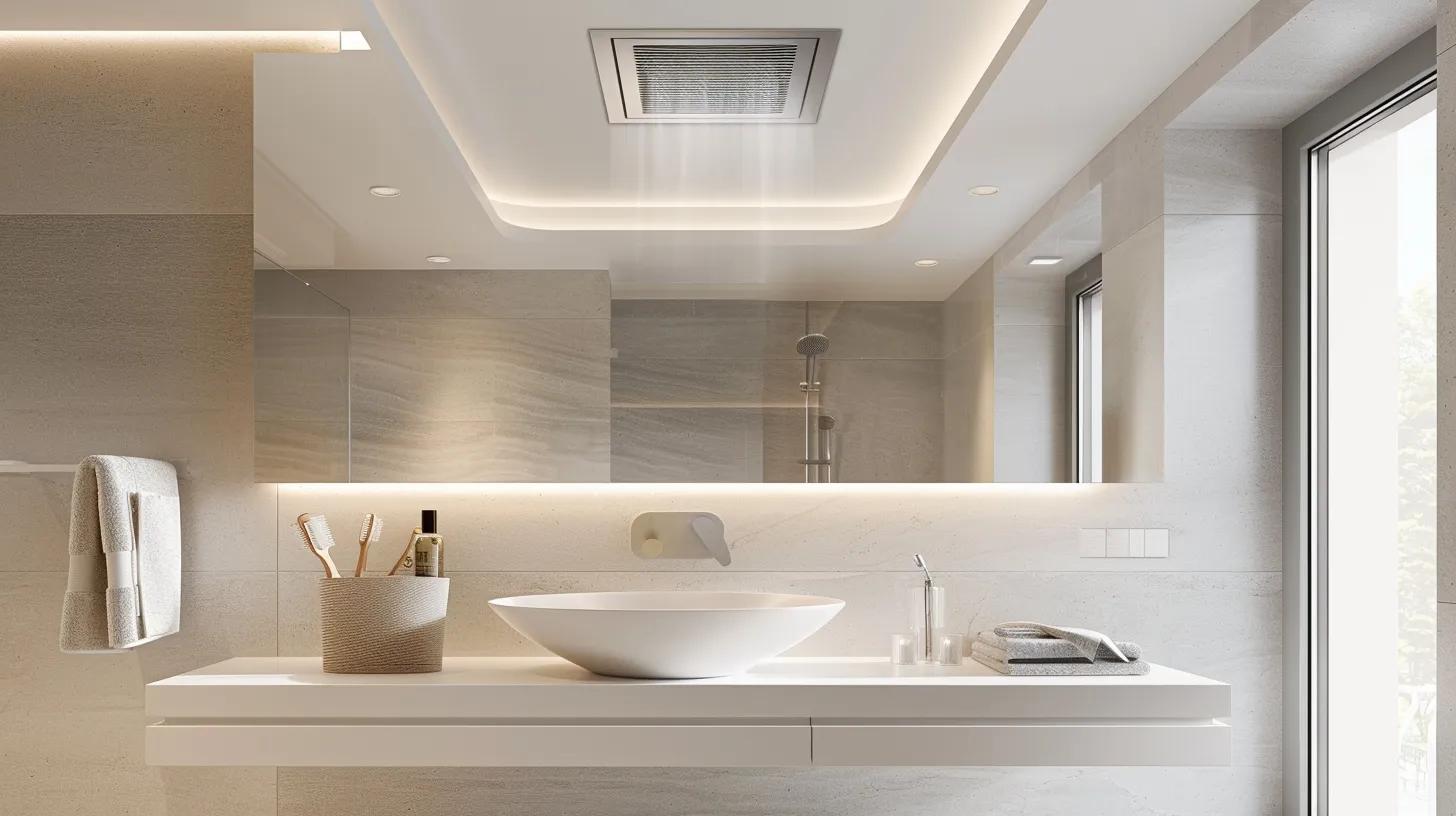
Proper installation of a bathroom soffit vent is critical to achieving optimum airflow and moisture removal while preventing further water damage or structural issues. The installation process requires careful planning, gathering the right tools and materials, and following a systematic approach. The procedure involves preparing the soffit area, cutting an opening that facilitates ductwork integration, securely fastening the vent, and ensuring that all joints are sealed and insulated. Skilled contractors, such as those working with AHB Construction services, emphasize precision and attention to detail throughout the installation process to ensure long-term performance and minimal maintenance.
Gathering Tools and Materials for Soffit Vent Installation
Before beginning the installation, it is essential to gather all necessary tools and materials. Typical tools include a power drill, reciprocating saw, measuring tape, level, and various fasteners. Additionally, materials such as the vent unit itself, ductwork components, sealing compounds, and insulation materials must be prepared. It is advisable to consult the vent manufacturer's guidelines for a comprehensive list. Safety gear, such as goggles and gloves, should also be used to protect against debris and sharp edges during the installation process. Preparation at this stage sets the foundation for a smooth and efficient installation process.
Preparing the Soffit Area for Vent Placement
The next critical step is to prepare the soffit area where the vent will be installed. This entails selecting a location that is free from obstructions and ensuring that there is adequate clearance for ductwork connections. Clearing the area may involve trimming any overhanging materials or modifying existing siding to accommodate the vent unit. In some cases, additional reinforcement may be required to ensure that the vent remains securely attached to the building envelope. Homeowners should take care to measure the area accurately and mark the desired location to avoid misalignment. Proper preparation minimizes the risk of installation errors and ensures that the vent functions optimally once installed.
Cutting the Opening and Securing the Bathroom Soffit Vent
Once the area is prepared, the next step is to cut an opening in the soffit that matches the dimensions of the vent unit precisely. This process should be carried out using a reciprocating saw or jigsaw, following the pre-measured lines carefully. It is critical to remove any debris or loose material from the cut area before installing the vent. After cutting, the vent unit is positioned into the opening and secured using appropriate fasteners. Special attention is paid to making sure the vent is level and flush with the soffit to ensure an airtight fit. This step is vital because even minor gaps in the installation can lead to moisture ingress or reduced airflow efficiency.
Connecting Ductwork to the Soffit Vent
After the vent is securely positioned, the next stage is to connect the ductwork. Ductwork should be cut and fitted to the correct lengths to maintain a straight, unobstructed airflow from the bathroom to the vent. The connections are typically sealed with mastic or foil tape to prevent any air leaks that could compromise the system’s efficiency. A well-connected duct will facilitate swift moisture removal and reduce the burden on the exhaust fan. It is also important to ensure that the duct diameter is consistent with the vent’s specifications, as change in diameter can lead to loss of pressure and efficiency. Correct ductwork connection is a key factor in the system's overall performance and longevity.
Sealing and Insulating the Bathroom Soffit Vent System
The final step in the installation process is sealing and insulating the vent system to protect against water intrusion and thermal losses. Sealants such as silicone or polyurethane caulk are applied around the edges of the vent and at the joints where the ductwork meets the vent. This prevents air leakage that could lead to condensation issues inside the attic or the soffit. Insulating the ductwork, especially in regions with extreme temperatures, ensures that the warm or cool air stays within the desired temperature range, leading to energy-efficient operation. Effective sealing and insulation not only enhance the vent’s performance but also extend its lifespan by reducing the impact of environmental elements.
Key Takeaways: - Gather all necessary tools including saws, drills, and fasteners, plus protective gear. - Prepare the soffit area by clearing obstructions and marking precise installation spots. - Cut the opening accurately and secure the vent flush with the soffit. - Connect ductwork correctly with proper sealing to promote effective airflow. - Seal and insulate the system to prevent air leaks and maintain thermal efficiency.
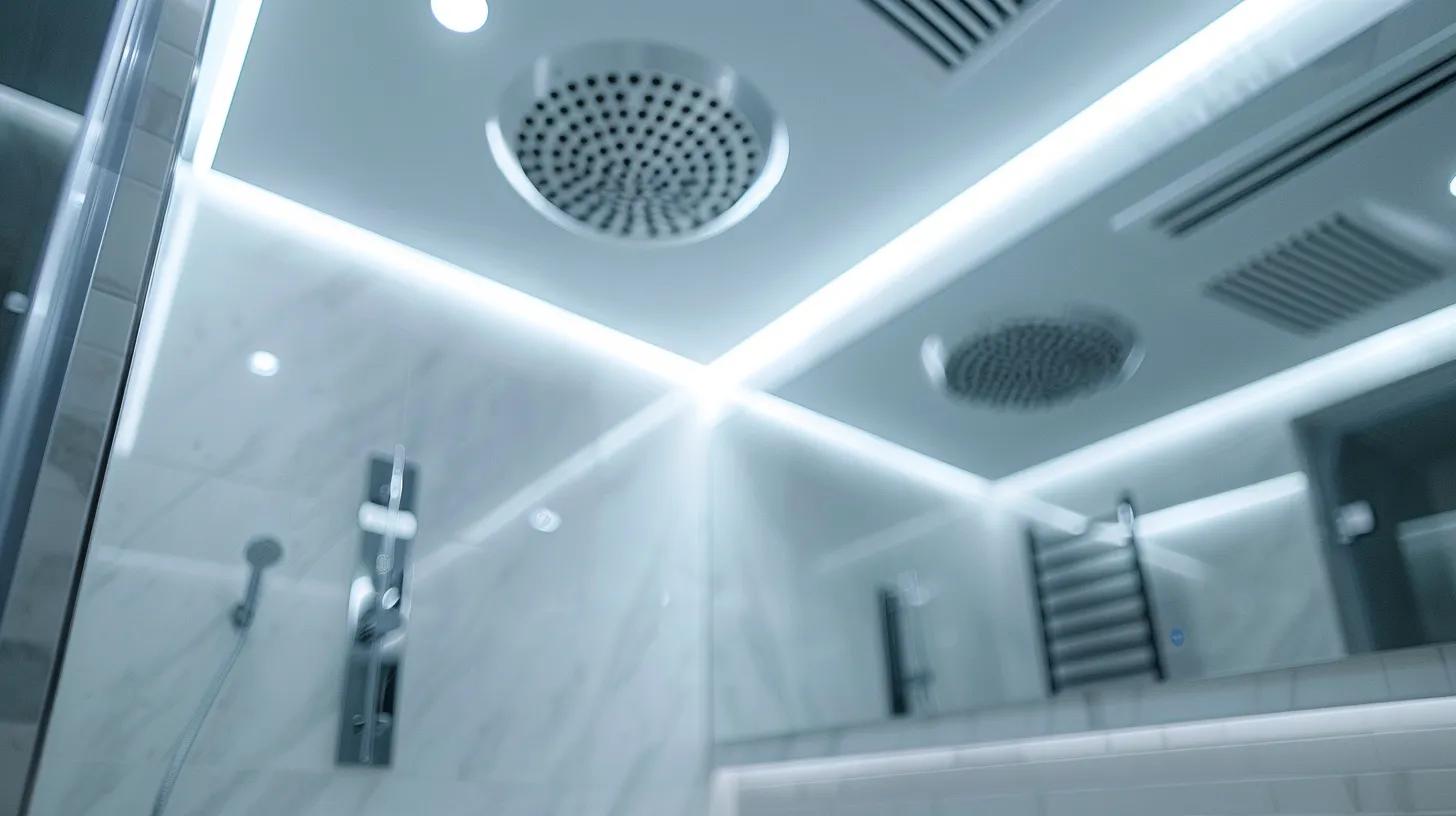
Maximizing Airflow With Your Bathroom Soffit Vent
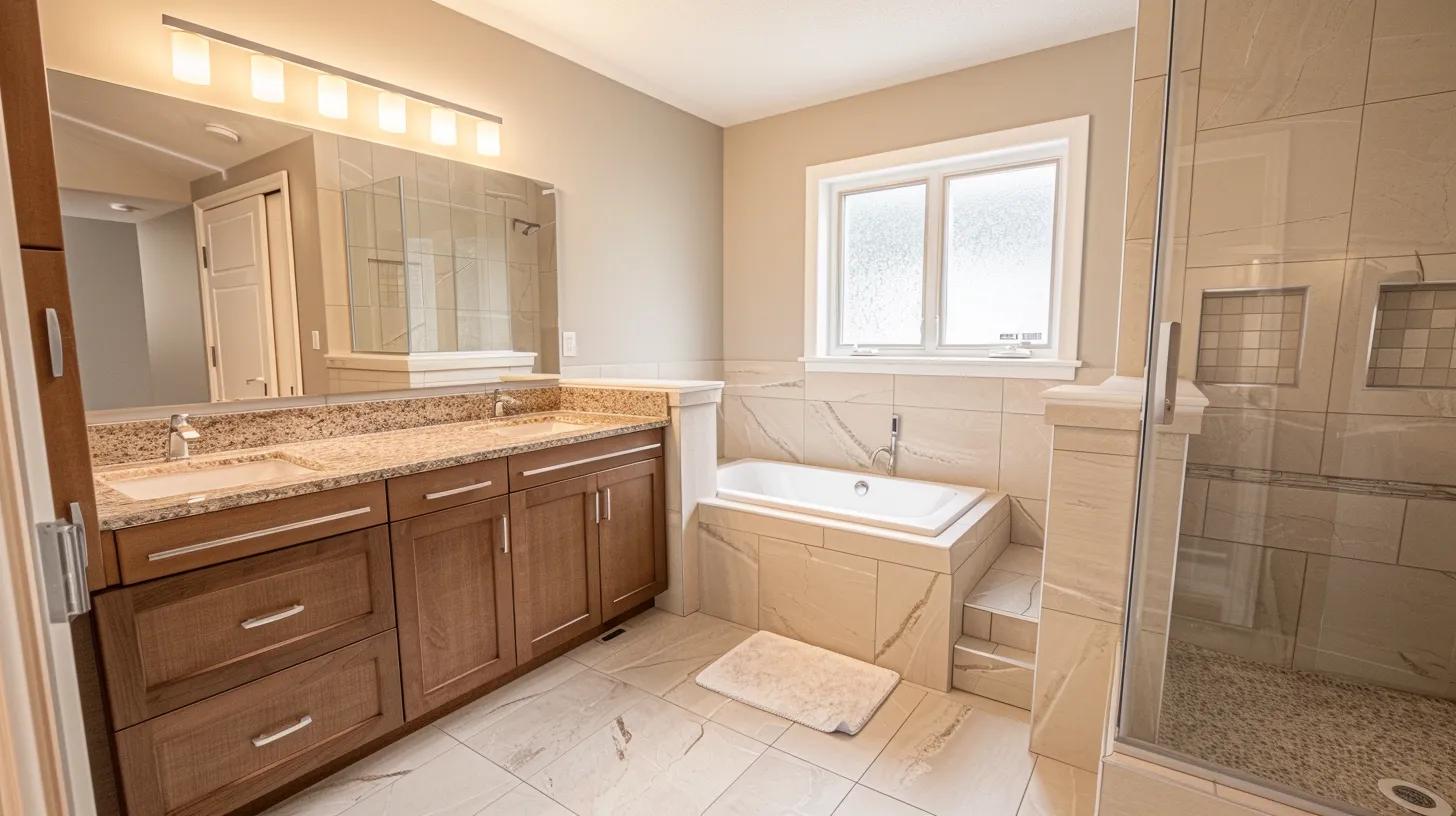
Maximizing airflow is essential to ensure that a bathroom soffit vent performs at its highest efficiency. Proper airflow guarantees that moisture and heat are effectively removed, thus preserving indoor air quality and preventing damage to building materials. A well-planned installation, including accurate positioning and proper ductwork configuration, sets the groundwork for optimal vent performance. Nevertheless, several factors post-installation can further enhance the effectiveness of the system, such as thoughtful vent positioning, maintaining straight and non-obstructed ductwork, and considering the impact of duct length and diameter on overall airflow. Homeowners must consider these factors to strike a balance between noise, efficiency, and maintenance requirements.
Positioning Your Bathroom Soffit Vent for Optimal Performance
The location of the vent is one of the primary determinants of performance. Ideally, the vent should be positioned at the farthest point from the bathroom’s moisture source to facilitate full air exchange throughout the space. In many cases, this means placing the vent near the center of the soffit to allow for even distribution of incoming and outgoing air. The surrounding environment, such as obstacles in the attic or exterior landscaping, should also be considered, as these can affect airflow patterns. Proper positioning not only maximizes the vent’s efficiency but also helps prevent the recirculation of moist air back into the attic. Adjustments in vent boundaries can create a more effective airflow path that improves energy efficiency and minimizes the risk of condensation.
Ensuring Ductwork Is Straight and Unobstructed
The ductwork connecting the bathroom exhaust fan to the soffit vent must be straight and free of obstructions to achieve optimal airflow. Each bend or section where the ductwork narrows reduces the airflow and potentially creates areas of backpressure that can diminish system efficiency. When installing or inspecting the ductwork, any kinks, debris, or insulation issues should be addressed immediately. A smoothly installed duct ensures that the extracted moist air can travel uninhibited, avoiding any undue wear on the exhaust fan. Maintenance checks are recommended periodically to ensure the continued integrity of the duct pathway. This attention to detail aids in the consistent removal of hot, humid air and supports overall system efficiency.
The Impact of Duct Length and Diameter on Airflow
Longer ducts introduce additional friction and resistance to air movement, which can reduce the effectiveness of the vent system. It is therefore critical to plan the route of the ductwork carefully, aiming for the shortest feasible path without compromising the aesthetics or functionality of the home. Similarly, the duct diameter must be appropriately sized relative to the exhaust fan’s capacity. A duct that is too narrow can hamper the airflow even if the vent itself is highly efficient. Conversely, a duct that is overly wide may lead to uneven air distribution. Balancing duct length and diameter is crucial in achieving a consistent flow rate that aligns with the recommended CFM ratings. In some installations, additional boosters or inline fans may be used to overcome long duct runs if necessary.
Using a Fan Compatible With Your Soffit Vent System
The overall performance of the bathroom soffit vent system is highly dependent on the compatibility of the exhaust fan. It is not uncommon to find exhaust fans rated for certain CFM values that need to be matched with the vent and ductwork for optimal performance. A fan with a higher CFM than required may create unnecessary noise and turbulence, while an underpowered fan will lead to insufficient moisture removal. Homeowners should consult product specifications and manufacturer guidelines to choose a fan that perfectly complements the ventilation setup. In many cases, energy-efficient, low-noise models are available that can run continuously without affecting indoor comfort levels. Matching the fan’s capability with the design specifications of the vent system ensures that the entire assembly operates in harmony.
Preventing Air Recirculation Into the Attic
A common challenge in vent systems is the inadvertent recirculation of moist or conditioned air back into the attic instead of expelling it completely outside. This can negate the benefits of the soffit vent and even lead to moisture damage within the attic itself. To mitigate this issue, it is important to install baffles or dampers that direct the airflow exclusively outward. Regular inspection and cleaning of the vent and duct components help ensure that no debris or obstructions force the airflow in the wrong direction. Additionally, verifying the system’s performance after installation with airflow measurement tools can provide peace of mind that the vent is operating as intended. Preventing air recirculation ultimately safeguards the building envelope by avoiding the buildup of humidity in the attic space.
Key Takeaways: - Proper vent positioning is critical for evenly distributing air and preventing recirculation. - Ducts must remain straight and unobstructed, as even slight kinks reduce efficiency. - Duct length and diameter should be balanced to match the exhaust fan’s CFM rating. - Using a compatible fan enhances overall system performance and reduces excess noise. - Preventive measures like dampers and baffles guard against recirculation into the attic.
Advantages of Using a Bathroom Soffit Vent
Utilizing a bathroom soffit vent offers numerous advantages that extend beyond merely expelling moist air. These vents contribute significantly to the overall indoor air quality and help mitigate problems that can affect both the health of the occupants and the integrity of the home. One of the primary benefits is improved indoor air quality. By effectively exhausting humid air and replacing it with drier, cleaner air, these vents help to reduce the risk of mold and mildew development – conditions that can trigger allergies and respiratory issues. In addition, by preventing moisture buildup, soffit vents help maintain the structural integrity of the building, reducing the risk of water damage to the fascia, siding, and even the roof structure itself.
Improved Indoor Air Quality Through Effective Ventilation
Effective ventilation is directly linked to better indoor air quality. When a bathroom soffit vent is incorporated into the system, it quickly removes polluted, humid air, replacing it with drier, cleaner air drawn from outside. This constant air exchange not only helps to control humidity levels but also reduces the concentration of allergens and potentially harmful microorganisms within the space. By promoting this continual air turnover, homeowners can prevent the adverse health effects associated with prolonged exposure to damp environments. This improvement in air quality further benefits the overall comfort and livability of the home.
Prevention of Mold and Mildew Growth in Bathrooms
One of the most significant advantages of using a bathroom soffit vent is its role in preventing the growth of mold and mildew. These microorganisms thrive in high-humidity environments, especially where air circulation is poor. The venting system rapidly removes moisture-laden air, thus reducing the relative humidity levels in the bathroom. This less hospitable environment for mold spores and mildew considerably lowers the risk of their formation. Additionally, by addressing the root cause of moisture accumulation, these vents help eliminate the conditions that lead to discoloration, odor, and potential health hazards associated with fungal growth.
Protection Against Structural Damage From Moisture
Excessive moisture not only affects the aesthetic appeal of a bathroom but can also induce long-term structural damage. Water damage is a common consequence of insufficient ventilation, leading to weakened building materials, rot, and eventual compromise of structural integrity. By ensuring efficient moisture removal, bathroom soffit vents protect critical components such as wood framing, insulation, and even ductwork. This proactive approach to ventilation minimizes maintenance costs and safeguards the overall longevity of the home. Moreover, with a reliable vent system, homeowners can avoid the financial burden associated with repairing water-damaged structures.
Potentially Shorter Duct Runs Compared to Roof Vents
Bathroom soffit vents are uniquely positioned on the exterior face of a building, typically along the eaves. This placement often allows for shorter duct runs compared to traditional roof vents that require penetrating the roof itself. Shorter duct runs translate into reduced friction losses and a more efficient transfer of airflow. This efficiency not only enhances the overall system performance but also simplifies the installation process, reducing labor costs and minimizing the potential for installation errors. The design inherent in soffit vents also contributes to a more aesthetically pleasing finish, as it avoids the visible clutter associated with roof penetrations.
Reduced Risk of Roof Leaks by Avoiding Roof Penetrations
A significant benefit of soffit vent installation is the reduced risk of roof leaks, which are often a direct consequence of multiple roof penetrations required for traditional venting systems. By routing the exhaust through the soffit, homeowners can avoid creating additional weak points in the roof structure that may allow water ingress during heavy rains or storms. This design strategy not only preserves the roofing material but also extends its lifespan by limiting the exposure to moisture. The overall building envelope remains stronger and more resilient, providing a long-term safeguard against both water damage and energy inefficiency.
Key Takeaways: - Soffit vents improve indoor air quality by enabling regular air exchange, reducing airborne pollutants. - They are critical in preventing mold and mildew, thereby promoting a healthier living environment. - Effective moisture removal via soffit vents protects against costly water damage and structural deterioration. - Shorter duct runs enhance installation efficiency and overall airflow performance. - Avoiding roof penetrations minimizes the risk of roof leaks and preserves the roof’s integrity.
Maintaining and Troubleshooting Your Bathroom Soffit Vent
As with any mechanical and building system, regular maintenance is key to ensuring that a bathroom soffit vent continues to perform efficiently over time. Routine inspections and proper troubleshooting techniques can prevent minor issues from escalating into major repairs or health hazards. Homeowners should establish a maintenance schedule to keep the vent and its associated ductwork free from blockages, corrosion, or debris build-up. Given the vent’s critical role in preventing moisture damage and mold growth, timely upkeep is not only a matter of performance but also of preserving the long-term health of the home’s structure. In homes serviced by reputable experts like AHB Construction, preventive maintenance is emphasized as part of a comprehensive home care program.
Regular Cleaning of the Soffit Vent Exterior
Keeping the exterior of the soffit vent clean is a simple yet vital maintenance step. Dust, debris, and insect nests can accumulate over time, obstructing airflow and reducing efficiency. Homeowners are advised to regularly inspect the vent, especially after seasonal changes or severe weather events. A gentle cleaning with a brush or a vacuum attachment can remove most of the accumulated particles without damaging the vent material. Regular cleaning not only aids in maintaining effective airflow but also prevents the growth of mold or mildew around the vent area, ensuring that the system continues to function as intended.
Inspecting Ductwork for Blockages or Damage
In addition to cleaning the vent exterior, periodic inspection of the ductwork connected to the soffit vent is essential. Blockages in the ductwork—caused by dust accumulation, bird nests, or physical damage—can significantly impair moisture removal efficiency. Homeowners should check both ends of the duct system (the connection at the bathroom exhaust and the soffit exit) for any signs of blockage. Damaged sections of duct should be repaired or replaced promptly to maintain an uninterrupted airflow. Rigid ductwork is generally preferred over flexible ducts due to its resistance to kinking and collapse. Blocking issues, if not addressed, can also lead to increased fan workload and early failure of the exhaust system.
Addressing Common Bathroom Soffit Vent Problems
Several common issues may affect the performance of a bathroom soffit vent. These include reduced airflow due to accumulation of lint or debris, noise from improper duct connections, and even water infiltration if the sealing is compromised. Homeowners should troubleshoot these issues by first checking for visible blockages and then verifying that all fasteners are secure. In cases where noise is present, examining the duct alignment and adjusting any misaligned sections can often resolve the problem. If there is evidence of water damage around the vent area, this may indicate a failure in the sealing process or a blockage that is causing backup water. Addressing these common issues promptly can usually prevent further damage and maintain the efficacy of the vent system.
Recognizing Signs of Poor Soffit Vent Performance
Indicators of poor performance in a bathroom soffit vent include persistent condensation on interior surfaces, visible mold growth around the vent, unusual fan noise, and higher-than-expected energy bills due to inefficient temperature control in the attic. Homeowners should be vigilant for these signs, as they are clear indications that the vent may require maintenance or repair. Regular performance checks, such as measuring humidity levels before and after vent operation, can help diagnose potential issues early. Consulting with a professional for a thorough inspection may be advisable if multiple signs of underperformance are observed.
When to Call a Professional for Soffit Vent Issues
While many maintenance tasks can be handled by a knowledgeable homeowner, certain problems require professional intervention. If there is significant water leakage, structural damage, or persistent airflow issues that do not resolve after basic troubleshooting, it is wise to contact a professional contractor. Experts, such as those at AHB Construction, can thoroughly assess the vent, ductwork, and overall building envelope to make precise repairs. Professional inspections are especially recommended in older homes where deterioration of materials may not be immediately apparent. Timely professional maintenance can prevent minor concerns from escalating into costly, large-scale repairs.
Key Takeaways: - Regular cleaning of the vent and ductwork is essential for maintaining optimal airflow. - Inspect ductwork periodically to identify and address blockages or damage promptly. - Recognize common signs of vent underperformance, such as condensation, mold, and noise. - Basic troubleshooting can resolve many issues, but persistent problems warrant professional help. - Timely professional intervention helps protect the integrity of the whole building envelope.
Frequently Asked Questions
Q: How often should a bathroom soffit vent be cleaned? A: It is recommended to inspect and clean the vent every three to six months, or more frequently in environments with high levels of dust or debris. Regular cleaning helps maintain optimal airflow and prevents issues such as blockages and mold buildup.
Q: Can I install a bathroom soffit vent myself, or do I need a professional? A: While some homeowners with DIY experience may choose to install a soffit vent, it is generally advisable to have a professional assess the setup, especially to ensure proper sealing and airtight ductwork connections. Improper installation can lead to inefficiencies and potential water infiltration.
Q: How do I know if my ductwork is properly sized for my exhaust fan? A: The duct should match the fan’s CFM rating and be designed to minimize airflow resistance. Homeowners can check manufacturer specifications and guidelines, or consult a professional to measure duct length and diameter to ensure it is properly sized for the required airflow.
Q: What are the primary signs that my soffit vent is not functioning correctly? A: Common signs include persistent condensation in the bathroom, visible mold growth, increased noise from the vent, and an overall lack of improvement in humidity levels. These symptoms indicate the need for inspection and possibly maintenance or repair.
Q: How can professional maintenance improve the performance of my soffit vent system? A: Professional maintenance addresses issues such as misaligned ducts, wear and tear on vent components, and improper sealing, which can all impede airflow. Experts can optimize the system to improve energy efficiency and ensure that moisture and heat are effectively expelled.
Q: Will a properly installed soffit vent reduce my energy bills? A: Yes, by promoting effective airflow and preventing the buildup of excess heat and moisture in the attic and bathroom, a well-functioning soffit vent can help maintain comfortable indoor temperatures and reduce the energy needed for heating and cooling.
Q: How does a bathroom soffit vent compare to traditional roof vents in terms of performance? A: Bathroom soffit vents often offer a shorter duct run and avoid additional roof penetrations, reducing the risk of leaks. They work efficiently in tandem with the home's overall ventilation system, although the choice between vent types depends on specific design and performance requirements.
Final Thoughts
A well-installed bathroom soffit vent is essential for effective moisture management and overall indoor air quality. By selecting the right vent type, ensuring precise installation, and following a regular maintenance schedule, homeowners can prevent costly water damage and safeguard their property. Efficient vent operation not only enhances energy efficiency but also promotes a healthier living environment by reducing mold and mildew risks. For those in the South Shore MA area, partnering with trusted experts like AHB Construction ensures that every aspect of ventilation, including the critical bathroom soffit vent, is handled with the utmost expertise and attention to detail.